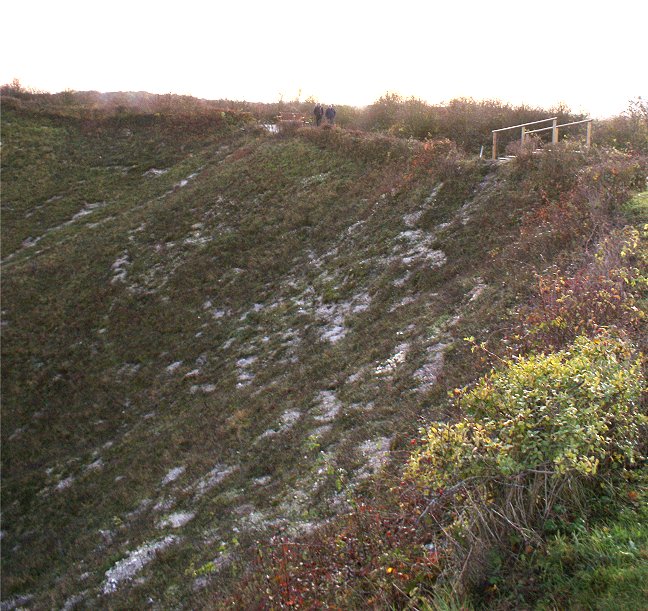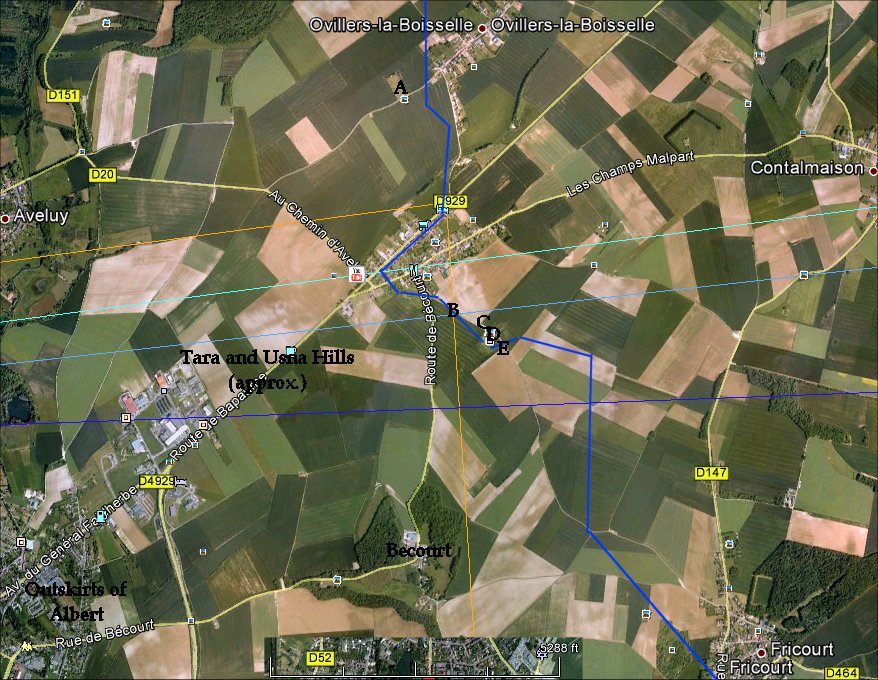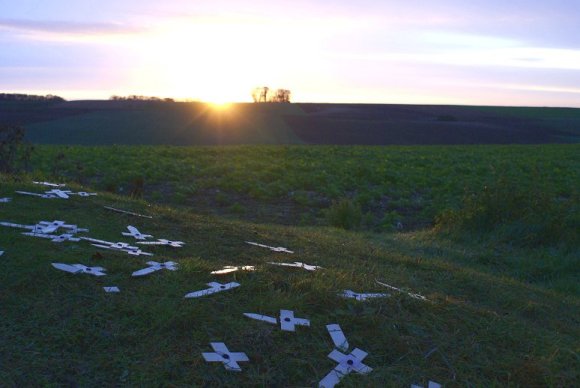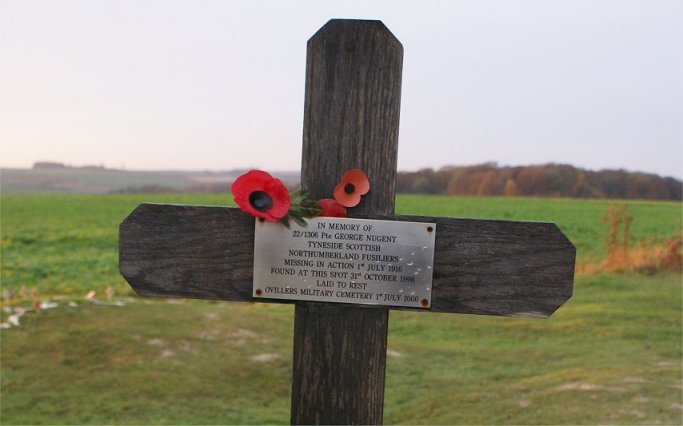






|
Here, a mine of 60,000 pounds was exploded here prior to the assault,
forming a crater 270 feet across and 70 feet deep. The merged
image above honestly does not bring across the enormous size of the
crater. Earth was thrust 5,000 feet into the air from the
explosion. Schwaben Hohe Redoubt was smashed, and many of the
German dogouts collapsed on their inhabitants. Although the
explosion was tremendous, Germans from outside the crater area survived
and manned their posts. The attacking British infantry got
unexpected opposition but still reached the edge of the crater and even
around to the left of it. Enfilade fire was too much,
however, and the attack was halted. |
 |

|
This is the view from the southern corner of the property, which was
bought and preserved by an Englishman so that this crater would survive
and not be filled-in as so many others have been. Rock from
the Lochnager tunnel was dumped near Becourt. On the left side of the panorama - to the British the right side of the crater - the attackers made some progress. A small advanced force of 13 men were tasked with moving into no man's land and occupy the lip of the crater immediately after the explosion. They got so close that some were even buried by falling debris. The British on this side of the crater reached the German fourth line, and they were able to hold onto the gains that night. By the standards of what had gone on north of here, this was an achievement, but the 34th Division had lost 5,121 men that day. South of here, across Sausage Valley visible on the left side of the panorama, the XV Corps was attacking Fricourt.  |
 |